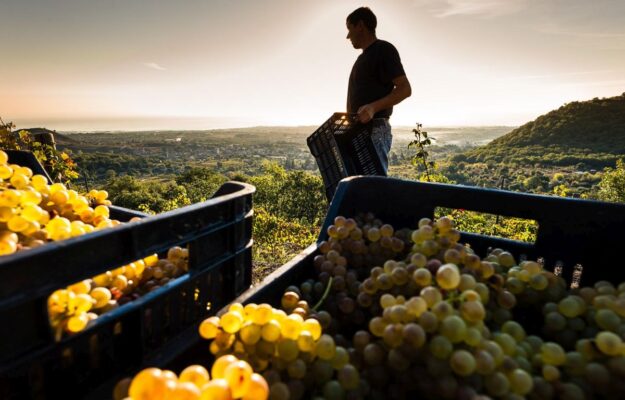We have mentioned several times that the second half of 2023 would be full of obstacles for Italian wine. Moreover, numbers are confirming that there is little room for imagination and hope. ISTAT data on exports, which WineNews examines every month, have revealed a rapid slowdown in shipments, in value and volume, caused by a globally fragile economic and consumption situation. At the same time, the initial estimates on domestic production of the harvest, which are sometimes premature, have proved in many cases to be far too optimistic. The number of grapes in the wineries in many areas around Italy needs to be adjusted, almost always downwards. These are the premises from which we must “read” the latest data from the UIV-Vinitaly Observatory, which revealed that 2023 is the most complicated year in the last 20 years. Bad news also from the current harvest, as estimates, on the quantity level, are expected to be even lower than what Assoenologi Observatory, Ismea and UIV had estimated a month ago (-12%). The volumes of grapes harvested are lower than expected due to hail and persistent heat, especially in the North - starting from Veneto Friuli Venezia Giulia and Piedmont but also in the South (Abruzzi and Sicily), which dried the grapes. On the other hand, a year of excellent quality is expected for many top denominations in Italy, starting with red wines.
In spite of the scarcity of available products for the new vintage - reads a note from UIV (Italian Wine Union) - the bulk wine market is at a standstill. The number of trades is on average -40% for the period, while prices of table wines as well as PDO and PGI products, especially from Central-Southern Italy, are experiencing strong upward pressure. The position of the industrial sector is especially fragile, fearing speculative chain effects that could also involve Regions and wines that have not been particularly affected by product shortages.
Negative signals are arriving from international trade as well. According to the UIV-Vinitaly Observatory, which processed the latest customs data on Italian wine exports to the non-EU area over the first 7 months of 2023, the trend has now reached almost double-digit decreases in volumes
(-9%) and has receded also in values (-6%). The situation is very serious in the largest market in the world: the United States. Over the last 4 months, volume has dropped from -4% to -12%, while Italian sparkling wines are at -16%, and bottled still wines at -10%. Overall, except for Russia, all the top 12 third-party markets examined have shown quantities decreasing, not only from the United States but also from key outlets such as the United Kingdom (-3%), Switzerland (-10%), Canada ( -20%), Japan (-16%), Norway (-13%), as well as emerging markets, such as China (-27%), South Korea (-40%), Australia (-20%) and Brazil (-4 %). The picture is bleak, the Observatory pointed out; however, it could improve in the last four months of the year in North America, as Canada has reported orders are increasing, and for the medium-high range in the United States.
“Because of the uncertainty that the complicated harvest situation has brought on”, Paolo Castelletti, General Secretary of the Italian Wine Union (UIV), commented, “in this market situation, we have, on one hand, bulk prices that are attempting an understandable rebound, with very little success, though, due to scarcity of product. On the other hand, there is the demand market; that is, mass retail trade, which is not willing to absorb the dynamics and in many cases is asking for a reduction in prices. This is a paradox for wine companies, emphasized by the sharply declining foreign trade. “Wine”, Castelletti concluded, “is a luxury good, and as such it is especially affected by the economic situation. People are well aware that after two exceptional years, this will be a year of sacrifices for everyone and a decline that we all hope will be only temporary. It is, therefore, fundamental for all the players in the supply chain to pay close attention to and be aware of the situation, accepting the fact that everyone will have to deprive themselves of something to meet the deadline and avoid speculative phenomena. And, it will be essential to agree on a strategic plan, together with the institutions, to promote the Italian wine business around the world”.
Copyright © 2000/2025
Contatti: info@winenews.it
Seguici anche su Twitter: @WineNewsIt
Seguici anche su Facebook: @winenewsit
Questo articolo è tratto dall'archivio di WineNews - Tutti i diritti riservati - Copyright © 2000/2025








































































































































































































